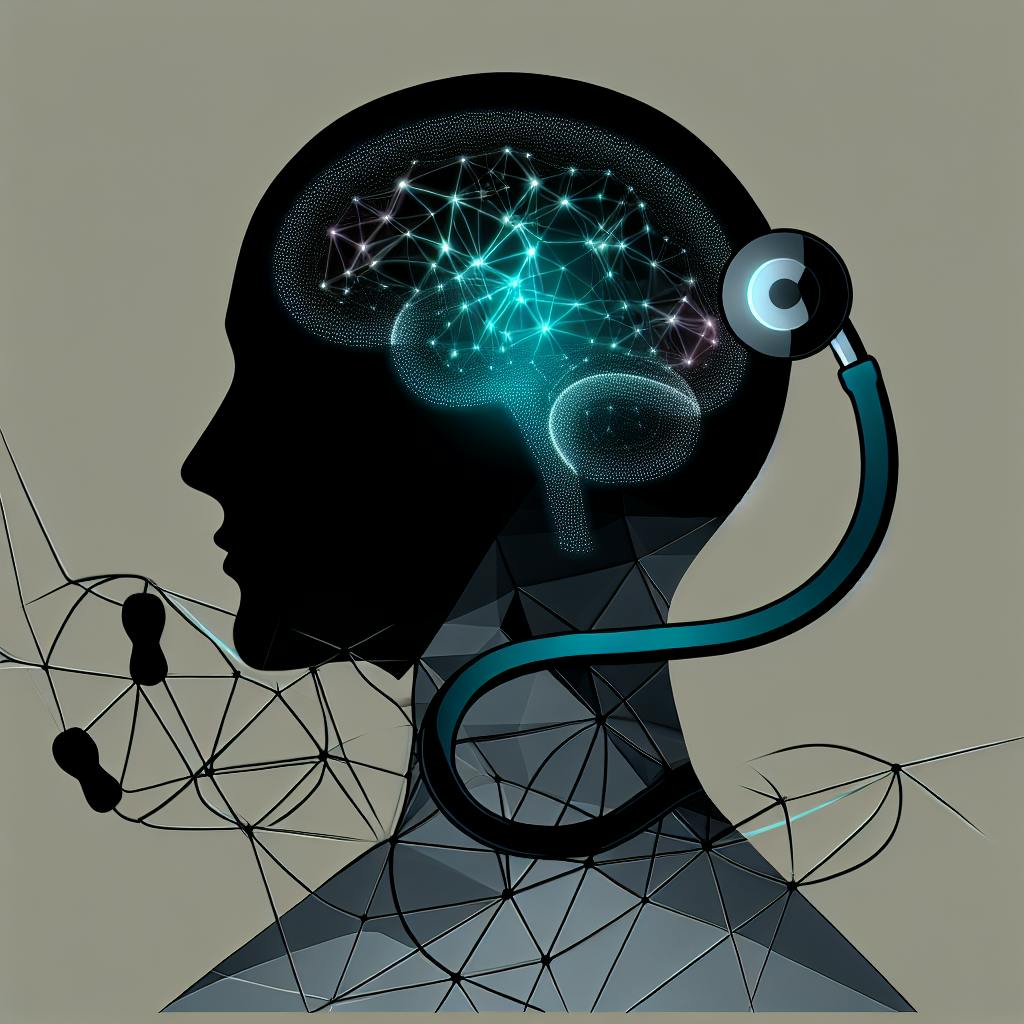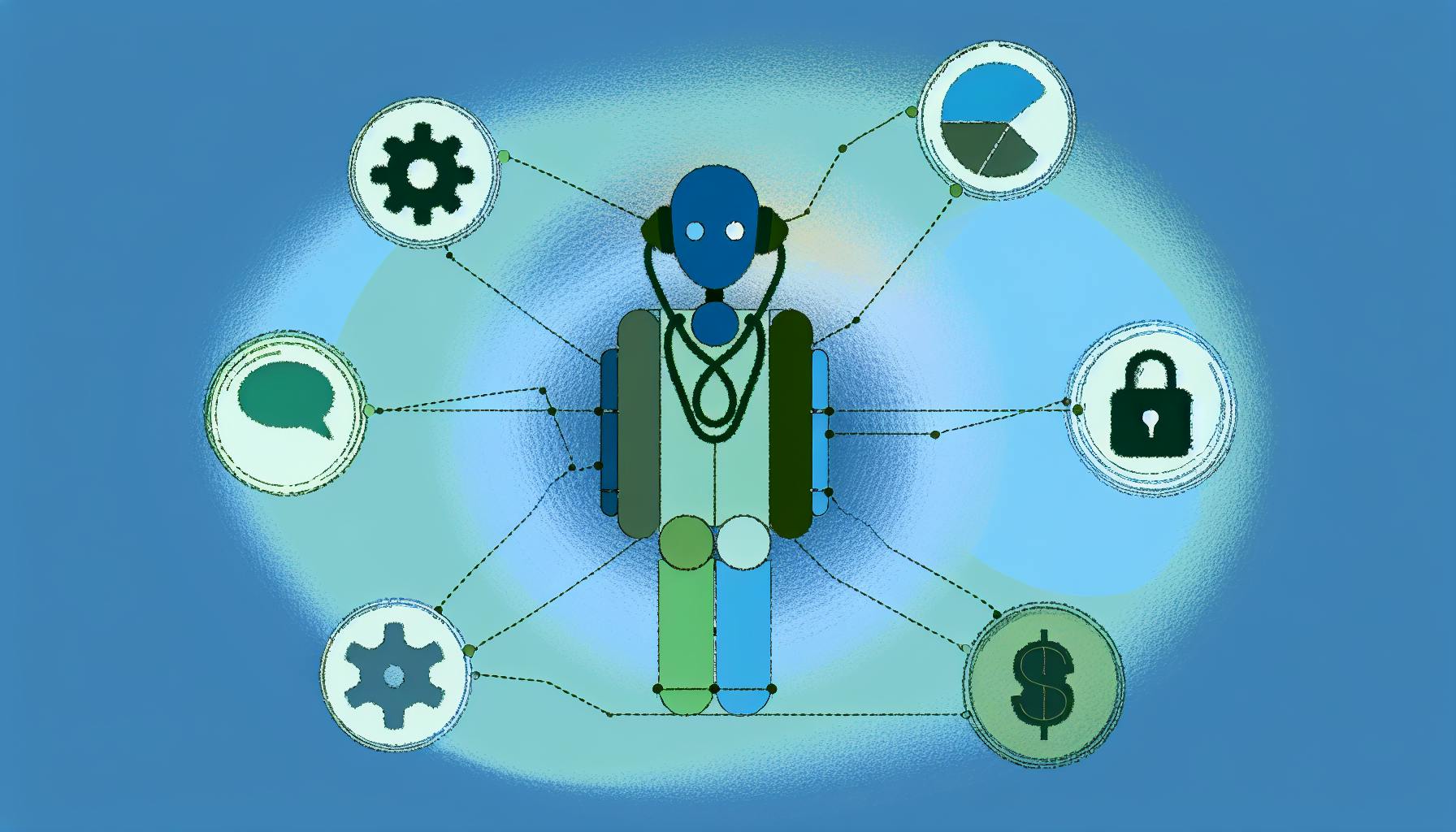OBGYN practitioners face a significant burden of documentation, impacting patient care and productivity. AI scribes and Electronic Health Record (EHR) systems offer solutions to streamline documentation, but with distinct advantages and challenges.
Key Benefits of AI Scribes for OBGYN:
- Real-time note transcription during patient encounters
- Reduced administrative burden, allowing more focus on patient care
- Seamless integration with existing EHR systems and workflows
- Improved patient interaction and engagement
- Potential cost savings and productivity gains
Key Benefits of EHR Systems for OBGYN:
- Centralized patient records for easy access and continuity of care
- User-friendly interfaces for data entry and task management
- Support for clinical decision-making with comprehensive patient data
- Customizable templates and workflows for OBGYN-specific needs
Quick Comparison:
| Feature | AI Scribes | EHR Systems |
|---|---|---|
| Documentation Speed | Real-time transcription | Manual data entry with templates |
| Note Accuracy | High accuracy with AI error detection | Built-in checks and error correction |
| Cost Structure | Subscription-based model | Upfront investment with ongoing maintenance |
| Customization for OBGYN | AI training for OBGYN terminology and workflows | Modular design for OBGYN templates and reporting |
While both technologies offer advantages, they also face challenges such as AI scribe limitations in understanding complex medical contexts, and EHR system security risks and steep learning curves.
The future of OBGYN documentation may involve improved AI capabilities, seamless integration of AI scribes and EHR systems, and specialized tools tailored to OBGYN practices, ultimately enhancing patient care and engagement.
AI Scribes for OBGYN
Real-Time Note Transcription
AI scribes transform the documentation process in OBGYN practices by transcribing doctor-patient interactions in real-time. This technology uses natural language processing and machine learning algorithms to accurately convert spoken words into comprehensive medical notes. With AI scribes, OBGYN physicians can focus on patient care while ensuring accurate and up-to-date medical records.
Benefits of Real-Time Transcription:
- Reduces administrative burden on healthcare providers
- Allows for more time devoted to patient care
- Improves overall practice efficiency
AI Scribe Workflow Integration
AI scribes seamlessly integrate with existing clinical workflows and EHR systems, enhancing the overall efficiency of documentation processes in OBGYN practices. By automating the documentation process, AI scribes reduce the time spent on manual note-taking, allowing healthcare providers to focus on higher-value tasks.
Integration Advantages:
| Feature | Benefit |
|---|---|
| Automated documentation | Reduces manual note-taking time |
| EHR system integration | Enables quick access to patient information |
| Customizable workflow | Meets specific needs of OBGYN practices |
Improved Patient Interaction
AI scribes can significantly improve patient interaction in OBGYN practices by reducing the manual documentation burden on healthcare providers. With AI scribes, OBGYN physicians can focus on patient care, engage in more meaningful conversations, and build stronger relationships with their patients.
Enhanced Patient Experience:
- More attentive and present healthcare providers
- Improved patient satisfaction and outcomes
- Accurate and timely documentation of patient encounters
EHRs in OBGYN
Centralized Patient Records
Electronic Health Records (EHRs) play a vital role in OBGYN practices by centralizing patient information, making it easily accessible to healthcare providers. This centralized system enables seamless continuity of care, allowing providers to access patient records, medical history, and test results from a single platform.
Using EHR Systems
EHR systems are designed to be user-friendly, with intuitive interfaces that facilitate easy navigation and data entry. OBGYN providers can quickly access patient information, update records, and perform various tasks, such as:
- Ordering lab tests
- Prescribing medications
- Scheduling appointments
EHRs and Clinical Decisions
EHR systems contribute significantly to clinical decision-making in OBGYN by providing comprehensive patient data. With access to accurate and up-to-date information, OBGYN providers can make informed decisions about patient care.
Benefits of EHRs in Clinical Decisions:
| Feature | Benefit |
|---|---|
| Accurate patient data | Informed decision-making |
| Up-to-date information | Effective diagnosis and treatment |
| Clinical decision support tools | Adherence to evidence-based guidelines |
By leveraging EHR systems, OBGYN practices can improve patient care, streamline workflows, and enhance overall practice efficiency.
sbb-itb-527d68c
AI Scribes vs. EHRs for OBGYN
Documentation Speed
When it comes to documentation speed, AI scribes and EHR systems have different approaches. AI scribes rapidly transcribe clinical notes in real-time, allowing OBGYN providers to focus on patient care. This technology significantly reduces the time spent on documentation, freeing up more time for direct patient interaction.
In contrast, EHR systems require manual data entry, which can be time-consuming and may lead to delays in documentation. However, some EHR systems offer templates and shortcuts to streamline the documentation process.
| Feature | AI Scribes | EHR Systems |
|---|---|---|
| Documentation Speed | Real-time transcription | Manual data entry with templates and shortcuts |
| Time Savings | Significant time savings | Some time savings with optimized workflows |
Note Accuracy
Both AI scribes and EHR systems aim to ensure accurate and reliable clinical notes. AI scribes use natural language processing and machine learning algorithms to identify and correct errors, ensuring high accuracy rates.
EHR systems, on the other hand, rely on manual data entry, which can be prone to errors. However, many EHR systems have built-in checks and balances to detect and correct errors, promoting accuracy and consistency.
| Feature | AI Scribes | EHR Systems |
|---|---|---|
| Note Accuracy | High accuracy rates with AI-powered error detection | Error detection and correction mechanisms |
| Error Reduction | Automated error reduction | Manual error reduction |
Cost and Return on Investment
The cost of implementing AI scribes versus EHR systems varies significantly. AI scribes typically require a subscription-based model, with costs dependent on the volume of documentation. EHR systems, on the other hand, often require a significant upfront investment, followed by ongoing maintenance and support costs.
When considering the return on investment, AI scribes can provide significant cost savings by reducing the time spent on documentation and improving productivity. EHR systems, while more expensive, can offer long-term benefits through improved patient care, enhanced data analytics, and streamlined workflows.
| Feature | AI Scribes | EHR Systems |
|---|---|---|
| Cost Structure | Subscription-based model | Upfront investment with ongoing maintenance |
| Return on Investment | Significant cost savings and productivity gains | Long-term benefits through improved patient care and data analytics |
Customization for OBGYN
Both AI scribes and EHR systems can be customized to meet the unique requirements of OBGYN specialties. AI scribes can be trained to recognize OBGYN-specific terminology and workflows, ensuring accurate and relevant documentation.
EHR systems, with their modular design, can be tailored to accommodate OBGYN-specific templates, workflows, and reporting requirements. This customization enables OBGYN providers to optimize their documentation and patient care processes.
| Feature | AI Scribes | EHR Systems |
|---|---|---|
| Customization | AI-powered customization for OBGYN terminology and workflows | Modular design for OBGYN-specific templates and workflows |
| OBGYN Support | Training for OBGYN-specific documentation | OBGYN-specific reporting and analytics |
By evaluating these key dimensions, OBGYN practices can make informed decisions about the most suitable documentation solution for their needs.
Challenges of AI Scribes and EHRs
While AI scribes and EHR systems offer numerous benefits for OBGYN documentation, they also come with their own set of challenges and limitations.
AI Scribe Limitations
AI scribes may struggle to fully understand complex medical contexts and nuances specific to the OBGYN specialty. They may not be able to accurately capture subtle patient interactions or recognize implicit medical concepts.
Training and Fine-Tuning: AI scribes require significant training and fine-tuning to adapt to the unique workflows and terminology used in OBGYN practices.
Critical Thinking: AI scribes are not designed to replace the clinical judgment of healthcare providers. They are primarily meant to assist with documentation, not perform tasks that require critical thinking, medical decision-making, or complex problem-solving.
Data Quality: AI scribes are limited by their reliance on high-quality training data, which can be difficult to obtain, especially for specialized fields like OBGYN.
EHR System Challenges
EHR systems present their own set of challenges for OBGYN providers.
Learning Curve: Implementing and mastering EHR systems can be time-consuming and frustrating, leading to decreased productivity and increased errors.
Security Risks: EHR systems contain sensitive patient information, making them vulnerable to cyber threats and data breaches. OBGYN practices must invest significant resources in ensuring the security and integrity of their EHR systems.
Customization: EHR systems may not be tailored to the specific needs of OBGYN practices, leading to workflow inefficiencies and decreased user adoption. Customizing EHR systems to meet the unique requirements of OBGYN providers can be a time-consuming and costly process.
By acknowledging and addressing these challenges, OBGYN practices can better navigate the implementation and integration of AI scribes and EHR systems, ultimately improving the quality and efficiency of patient care.
The Future of OBGYN Notes
Pros and Cons Summary
Here's a summary of the advantages and disadvantages of AI scribes and EHR systems for OBGYN documentation:
| Technology | Advantages | Disadvantages |
|---|---|---|
| AI Scribes | Real-time note transcription, improved patient interaction, cost savings | May struggle with complex medical contexts, require significant training and fine-tuning |
| EHR Systems | Centralized patient records, facilitate clinical decisions, widely adopted | Time-consuming to implement, vulnerable to security risks, may not be tailored to OBGYN-specific needs |
Evolving OBGYN Note Tools
As OBGYN documentation technology continues to evolve, we can expect AI scribes and EHR systems to become even more sophisticated and integrated. Some potential future developments include:
- Improved AI capabilities: AI scribes may become better at understanding complex medical contexts and providing more accurate and comprehensive notes.
- Seamless integration: AI scribes and EHR systems may become more closely integrated, allowing for effortless data exchange and synchronization.
- Specialized OBGYN tools: EHR systems and AI scribes may be tailored to meet the unique needs of OBGYN practices, providing more efficient and effective documentation solutions.
- Enhanced patient engagement: AI scribes and EHR systems may enable patients to play a more active role in their care, with secure access to their medical records and personalized health information.
As the landscape of OBGYN documentation technology continues to shift, it's essential for healthcare providers to stay informed and adapt to these changes, ultimately improving the quality and efficiency of patient care.


